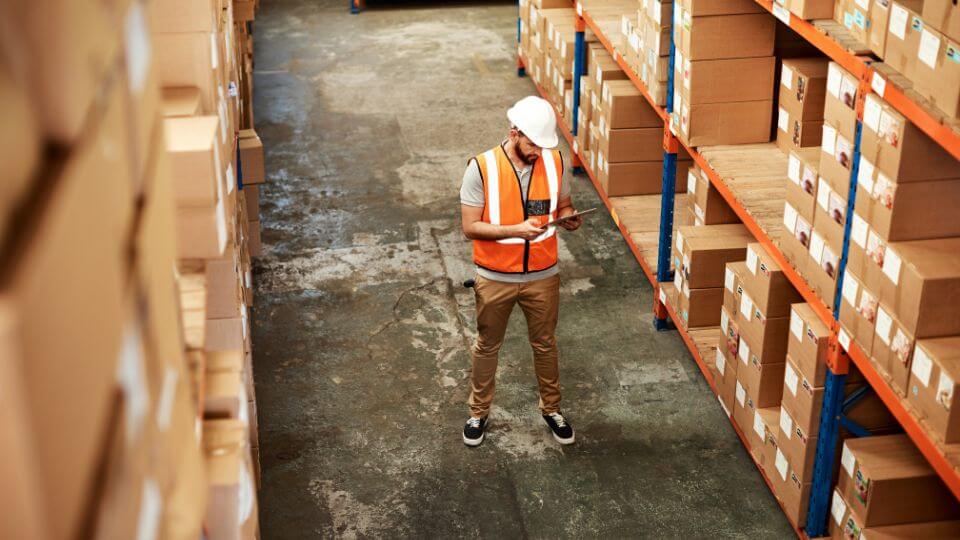In an era where e-commerce is blooming, the concept of micro fulfillment is making significant waves. This innovative approach to order fulfillment is transforming the way businesses meet customer demands. In this comprehensive guide, we’ll explore everything you need to know about micro fulfillment: from its definition and key components to its benefits, challenges, and the companies driving its adoption.
What is Micro Fulfillment?
Micro fulfillment is a state-of-the-art approach to order fulfillment that centers around optimizing the last-mile delivery process. Unlike traditional, large-scale distribution centers situated far from urban areas, micro fulfillment centers are compact, highly automated facilities strategically placed in or near densely populated regions. The primary goal of these centers is to expedite deliveries, catering to the ever-increasing demand for fast and efficient e-commerce order fulfillment.
How Does Micro Fulfillment Work?
In essence, micro fulfillment centers leverage automation, robotics, and efficient logistics to process and deliver customer orders rapidly and accurately. The strategic placement of these centers in or near urban areas reduces delivery times, meeting the demands of modern consumers for fast and reliable e-commerce deliveries. The micro fulfillment process typically involves the following steps:
Order Placement:
Customers initiate the micro fulfillment process by placing orders through the retailer’s e-commerce website or mobile app. This is where the journey begins, as customers select the items they want and submit their orders electronically.
Order Processing:
Once orders are received, they are seamlessly processed by the micro fulfillment system. This digital intelligence identifies the specific items to be picked, packed, and ultimately delivered to the customer. The system serves as the central control hub orchestrating the entire fulfillment operation.
Inventory Management:
Within the micro fulfillment center, there exists a compact yet strategically organized inventory. This inventory is carefully curated to house popular or frequently ordered items. Real-time inventory monitoring ensures that these items are readily available for order fulfillment, maintaining a high level of operational efficiency.
Automated Picking:
Advanced robotics and automation systems come into play when it’s time to pick the items from the shelves. Robots or automated guided vehicles (AGVs) navigate skillfully through the center’s storage, efficiently locating and retrieving the requested items. The precision of these automated systems minimizes errors, increases efficiency, and ensures the accurate fulfillment of customer orders.
Packing and Sorting:
Once picked, items are brought to dedicated packing stations. Here, they undergo careful preparation for delivery. Algorithms and software are deployed to optimize the packing process, ensuring that packaging materials are used efficiently. Items are also meticulously sorted and organized based on their respective destinations to facilitate streamlined delivery routing.
Last-Mile Delivery:
With orders expertly picked, packed, and sorted, they are now ready for delivery to the awaiting customers. This phase involves dispatching orders for delivery, either through human delivery drivers or autonomous vehicles, depending on the business’s logistics strategy. The micro fulfillment center’s strategic location, often situated in or near urban areas, ensures swift and timely delivery to customers’ doorsteps. Efficient routing and real-time tracking further contribute to ensuring that deliveries meet or exceed customer expectations.
Real-Time Tracking and Communication:
Customers are provided with real-time tracking information, granting them the ability to closely monitor the progress of their orders. This transparency, combined with accurate delivery estimates and timely updates, enhances the overall customer experience, instilling confidence in the reliability of the fulfillment process.
Returns Handling:
In the event of returns, micro fulfillment centers often have dedicated areas for processing returned items. Each returned item is carefully assessed, and its disposition – whether it’s restocking, refurbishing, or proper disposal – is determined based on its condition, ensuring efficiency in handling returned merchandise.
Inventory Replenishment:
To maintain optimal inventory levels, micro fulfillment centers regularly restock items that are frequently in demand. Replenishment decisions are data-driven, relying on real-time demand data to ensure that these items remain readily available for prompt order fulfillment.
Continuous Monitoring and Optimization:
Micro fulfillment centers operate under the constant scrutiny of performance metrics. This includes monitoring order volume, processing times, inventory turnover, and delivery performance. Insights derived from this data are instrumental in making operational adjustments, optimizing efficiency, and continuously enhancing the entire order fulfillment process to meet the evolving needs of customers.
What are the Benefits of Micro Fulfillment Centers?
Micro fulfillment centers offer several significant benefits for businesses operating in the e-commerce and logistics sectors. These advantages are instrumental in meeting the growing demands of modern consumers and enhancing operational efficiency. Here are the key benefits of having micro fulfillment centers:
Faster Order Fulfillment:
Micro fulfillment centers are strategically positioned, often within or near densely populated urban areas. This proximity significantly reduces the distances and travel times required for order delivery. As a result, customers receive their orders much more quickly, aligning perfectly with the expectations of modern online shoppers who demand rapid and efficient service. This swifter order fulfillment not only enhances customer satisfaction but also contributes to higher loyalty and repeat business.
Cost Savings:
One of the primary advantages of micro fulfillment centers is their ability to reduce operational costs. By minimizing delivery distances and optimizing delivery routes, businesses can achieve significant cost savings in transportation. Additionally, these centers embrace automation and streamlined processes, reducing the reliance on extensive manual labor. This cost-efficiency is a compelling incentive for businesses looking to enhance their bottom line.
Enhanced Customer Experience:
Micro fulfillment centers play a pivotal role in enhancing the overall customer experience. With faster delivery times, customers can expect their orders to arrive promptly, a crucial factor in meeting and exceeding their expectations. Real-time tracking and accurate delivery estimates further contribute to a positive shopping experience. These features instill confidence in customers, making them more likely to choose a business with efficient and reliable fulfillment operations.
Space Optimization:
These centers are characterized by their compact size and efficient use of space. This design is particularly valuable for businesses operating in urban areas where available real estate is limited and costly. By maximizing the use of available space, businesses can efficiently manage their operations while keeping overheads in check.
Efficiency and Accuracy:
Automation and robotics are integral to micro fulfillment centers, ensuring precise and efficient picking and packing of items. This technological advantage significantly reduces the occurrence of errors, leading to greater accuracy in order fulfillment. Efficient algorithms are employed to optimize the packing process, minimizing packaging waste and further enhancing the overall efficiency of the operation.
Downsides of Micro Fulfillment and Micro Warehousing
While micro warehousing and micro fulfillment offer several advantages, they also come with certain downsides and challenges that businesses need to consider when implementing these strategies. Here are some of the downsides:
Limited Inventory Capacity:
Micro fulfillment centers are intentionally designed to house popular and frequently ordered items efficiently. However, this focus on optimization comes with a limitation – these centers may have limited capacity for storing a diverse range of products. Items with low demand or irregular sizes may not fit well within the micro fulfillment model, requiring businesses to find alternative storage solutions or fulfillment strategies for such products.
High Initial Investment:
Implementing micro fulfillment centers can be associated with a significant upfront investment. This encompasses costs related to infrastructure, advanced automation technology, software integration, and employee training. The expense of setting up and equipping these centers with the necessary technology can be a financial challenge for some businesses, especially smaller enterprises.
Maintenance and Technical Issues:
Automation systems, which are integral to micro fulfillment, require ongoing maintenance and technical support. These systems may experience occasional glitches or hardware failures that can disrupt operations. Businesses must allocate resources and expertise to address these issues promptly to ensure seamless order fulfillment.
Delivery Routing Complexity:
Optimizing last-mile delivery routing when serving multiple micro fulfillment centers can be complex. Efficiently routing orders to customers while considering delivery windows, traffic patterns, and various fulfillment locations requires sophisticated logistics management and technology solutions.
Location Constraints:
The ideal location for a micro fulfillment center is often within or near urban areas to reduce delivery times. However, securing suitable real estate in these desirable locations can be expensive and competitive, posing a challenge for businesses aiming to establish or expand their micro fulfillment operations.
Why is Micro Fulfillment Gaining Momentum in 2023?
The surge of micro fulfillment in e-commerce this year is driven by several key factors. The ongoing trend of urbanization, with more people residing in densely populated urban areas, necessitates efficient last-mile delivery solutions, making strategically located micro fulfillment centers an essential answer.
Furthermore, the rapid growth of e-commerce, fueled by shifting consumer preferences and the allure of digital shopping, has prompted businesses to turn to micro fulfillment as a means to keep up with the brisk pace of online sales.
Advancements in automation, particularly in robotics and artificial intelligence, have made automation more accessible and cost-effective, allowing micro fulfillment centers to streamline order processing, which results in significant time savings.
Additionally, these centers align with sustainability goals by minimizing delivery distances, thus reducing the carbon footprint of last-mile deliveries, which resonates with environmentally conscious consumers.
Conclusion
Micro fulfillment is revolutionizing the way e-commerce businesses approach order fulfillment. By prioritizing speed, efficiency, cost savings, and customer satisfaction, micro fulfillment centers are meeting the escalating demands of online shoppers while revolutionizing the last-mile delivery process. As technology continues to advance and urbanization persists, micro fulfillment is poised to play an increasingly vital role in the future of e-commerce. Embracing micro fulfillment may well become the key to success in the ever-expanding world of online commerce, offering a win-win solution for businesses and consumers alike.
Micro Fulfillment FAQs
While MFCs are beneficial for many businesses, they are particularly well-suited for e-commerce, grocery, and retail operations that need to fulfill a high volume of orders with speed and accuracy.
Yes, businesses of all sizes can implement Micro Fulfillment, but the scale and complexity of the system may vary. Smaller businesses might opt for third-party micro fulfillment services, while larger enterprises may build and operate their centers.
Challenges include the high initial investment, maintenance of automation systems, space constraints, technology dependencies, and potential impacts on the workforce. Efficient logistics management and inventory accuracy are also critical considerations.
Yes, Micro Fulfillment contributes to sustainability by reducing the carbon footprint associated with last-mile deliveries. The proximity of these centers to urban areas minimizes delivery distances and emissions.
Micro Fulfillment Centers often have dedicated areas for processing returned items. Returns are assessed, and their disposition (restocking, refurbishing, disposal) is determined based on their condition, ensuring efficient handling of returns.
Yes, Micro Fulfillment Centers offer scalability and adaptability. Businesses can quickly replicate or expand their operations to meet changing demand, making them well-prepared to respond to shifts in the market.
Data and analytics are crucial for monitoring and optimizing operations. They provide insights into order volume, processing times, inventory turnover, and delivery performance, enabling businesses to make informed decisions and enhance efficiency.
Micro Fulfillment centers enable faster delivery times, real-time tracking, and reduced order fulfillment errors. These factors contribute to an improved overall shopping experience, aligning with customer expectations for convenience and reliability.





